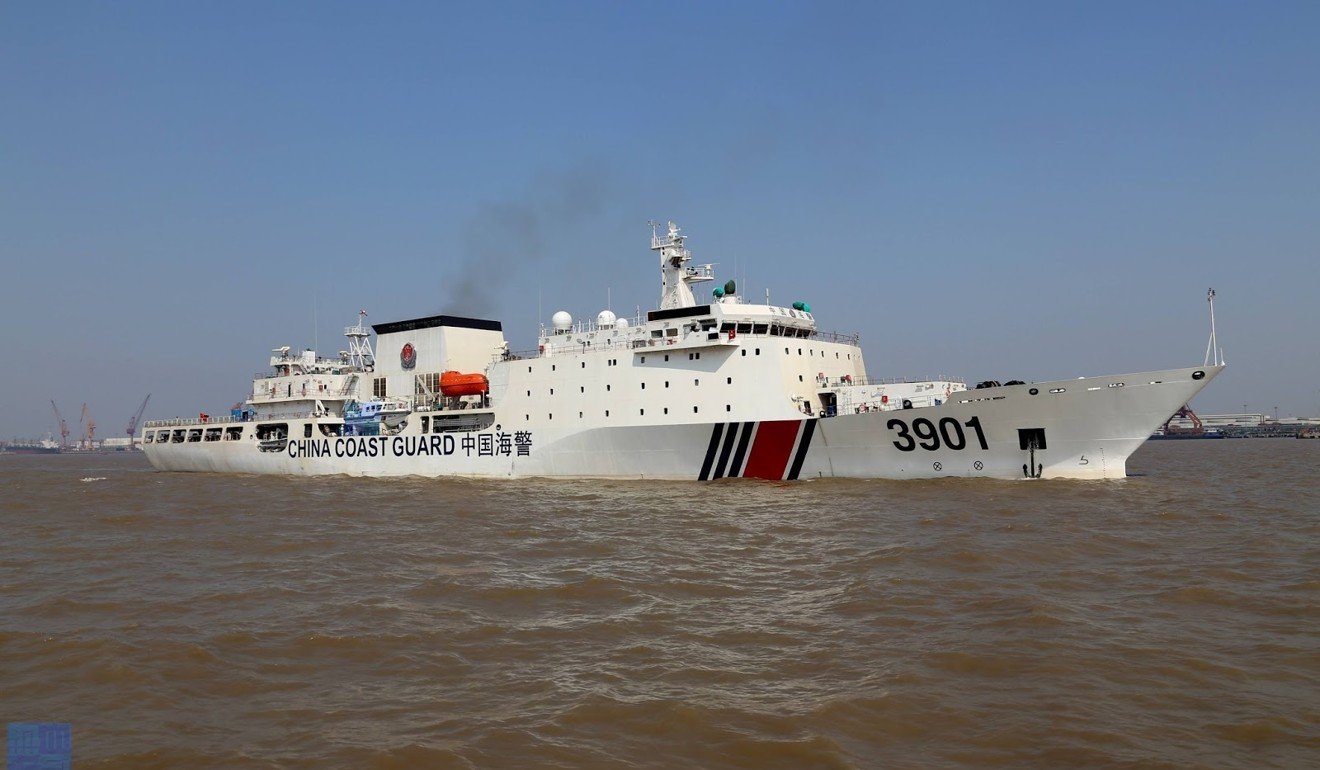
Chinese survey ship returns to scene of stand-off with Vietnamese coastguard
- Vessel returns to disputed waters in the South China Sea where it has been involved in a month-long confrontation
A Chinese survey ship has returned to disputed waters in the South China Sea where it has been engaged in a month-long stand-off with the Vietnamese, according to a ship tracking analysis.
The Haiyang Dizhi 8, or Marine Geology 8, had briefly left the waters surrounding the Spratly Islands but returned on Wednesday with at least two other ships, the US-based Centre for Advanced Defence Studies said.
Many observers speculated its departure was a brief refuelling or replenishment stop for the ship at Fiery Cross Reef, one of China’s artificial island outposts in the Spratlys, according to Collin Koh, a research fellow from Singapore’s S. Rajaratnam School of International Studies.
He said he did not believe that the ship had been pulled back as a concession by China, which objects to Vietnam’s oil exploration work in the region.
“The whole objective therefore seems to be keeping up with this form of gunboat diplomacy … in what Beijing plausibly sees as a protracted struggle to hopefully compel Vietnam to concede by stopping its energy work,” he said.
The Chinese geological survey ship began surveying the area around Vanguard Bank, a Vietnamese-controlled reef, last month.
It was accompanied by Chinese coastguard ships and confronted by Vietnamese coastguard ships.
At the climax of the stand-off, up to 20 armed vessels from both sides were involved at the scene, including China’s Haijing 3901.
But both Beijing and Hanoi have played down the stand-off, probably to avoid the issue escalating into another major crisis like a stand-off in 2014 that prompted mass anti-China protests in Vietnam.
Professor Hu Bo, director of China’s South China Sea Strategic Situation Probing Initiative, said that Vietnam’s energy work was the real target of the Haiyang Dizhi 8 mission.

“Vietnam has speeded up its oil exploitation in the Vanguard Reef region and China believes it must take some counteractions,” he said.
China claims most of the resource-rich South China Sea but this is contested by neighbouring countries, with Vietnam, the Philippines, Malaysia and Brunei all having their own overlapping claims.
Vanguard Bank is the westernmost reef of the Spratlys and is in an area that Vietnam claims as an exclusive economic zone 200 nautical miles off its coast.
The Vanguard Bank basin is known to have rich oil and gas reserves, and Vietnam has built dozens of oil rigs in the area.
In 2014 a similar stand-off, which saw ships ramming each other, became the worst dispute between China and Vietnam in decades.
Since then, Beijing has built seven islands on the reefs and deployed troops and advanced weapons there to improve its control.
The United States has accused China of “bullying behaviour” and “militarising” the reefs and regularly challenges Beijing’s claims by sending ships on “freedom of navigation” operations in the contested waters.

